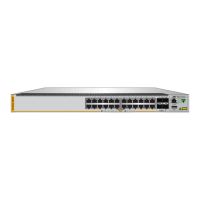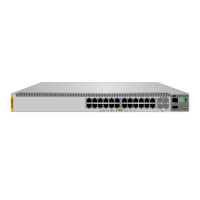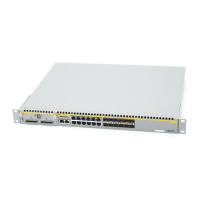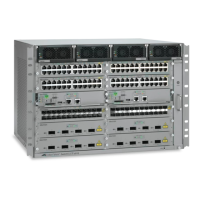x530 Series Installation Guide for Virtual Chassis Stacking
61
Stacking Guidelines
This section lists the general guidelines to building a VCStack of x530
Series switches. Stacking guidelines differ depending on the version of the
AlliedWare Plus management software on the switches. (Instructions in
Chapter 7, “Building the Trunk with the Default SFP+ S1 and S2 10Gbps
Stacking Ports” on page 131 and Chapter 8, “Building the Stack with
Gigabit or 5G Multi-speed Ports” on page 149 explain how to display the
version numbers of the management software.)
You must connect the switches of a stack together with a trunk,
consisting of a minimum of two ports per switch.
Here are the ports that you can use as trunk ports on x530 Series
switches:
– SFP+ ports with 10Gbps transceivers or direct connect cables
– SFP+ ports with 1Gbps transceivers
– 5Gbps multi-speed ports
– 1Gbps copper ports
– 1Gbps SFP ports 1 to 24 on the x530-28GSX Switch
Here are the maximum numbers of x530 Series switches that you
can have in stacks:
– Maximum eight switches with trunks of SFP+ ports with 10Gbps
transceivers or direct connect cables
– Maximum four switches with trunks of SFP+ ports with 1Gbps
transceivers
– Maximum eight switches with trunks of 5Gbps multi-speed
ports
– Maximum four switches with trunks of 1Gbps copper ports
– Maximum four switches with trunks of 1Gbps SFP ports 1 to 24
on the x530-28GSX Switch
The maximum number of trunk ports per switch varies depending
on the port type:
– Maximum four ports per switch for trunks of SFP+ ports with
10Gbps transceivers or direct connect cables
– Maximum four ports per switch for trunks of SFP+ ports with
1Gbps transceivers
– Maximum four ports per switch for trunks of 5Gbps Multi-speed
ports

